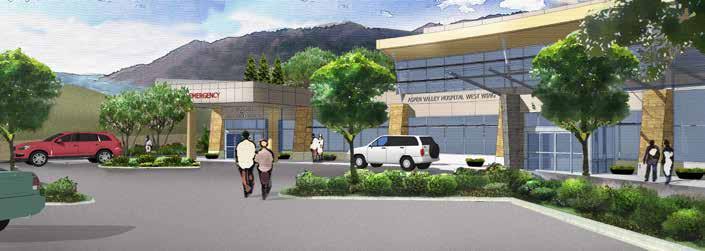
10 minute read
AVH FOUNDATION
PHILANTHROPY AT WORK
How our community helps AVH look beyond today
By Deborah Breen, AVH Foundation President & CEO
The newly constructed west wing of the Hospital features the Resnick Family Emergency Department and the Renée and Lester Crown Outpatient Care Pavilion, which houses the diagnostic imaging center, same day surgery center, the laboratory, the Marian and Ralph Melville Oncology and Infusion Center, and the Hospital-owned primary care, otolaryngology and ophthalmology practices.
While no one can predict the future, one can certainly plan for it. And, that is exactly what Aspen Valley Hospital has been doing. Safeguarding cash reserves to carry the organization through challenging times ensures our Hospital has the resources it needs, when needed most.
To that end, the COVID-19 pandemic thrusted the Hospital into a volatile and unpredictable environment. The Hospital immediately began bracing for impact, implementing an aggressive cash preservation plan and leveraging any available state and federal grants and loans to keep operations and cash flows stable. At the same time, our philanthropic community stepped up with incredible levels of giving. All of this allowed the Hospital to stabilize and fostered financial recovery.
Those cash preservation measures were critical to survival. However, on the revenue side of the equation, the impact of canceled surgeries and procedures deemed “elective” had a crushing impact, draining over $9 million from cash reserves. When the dust settled, 2020 wrapped up with an overall net operating loss. While a “loss” is never something to celebrate, things could have been much, much worse had we not taken an aggressive and proactive approach to managing our financial situation given the hand we were dealt.
NEED DRIVES DECISIONS Many challenges and uncertainties continue to face not only Aspen Valley Hospital, but also the healthcare industry as a whole — and that is exasperated by COVID-19. You see many for-profit hospitals and other healthcare facilities popping up all over the country. So, what makes us different? As a non-profit, community-owned hospital, every decision made is based on need, not on profits. We evaluate and treat everyone who comes to us for care, regardless of their ability to pay. On average, we invest over $2 million in charity care programs annually, and we are governed by a volunteer and elected hospital Board who receives no compensation or dividends for the extraordinary amount of time they give serving as loyal stewards of this incredible community resource.
PLANNING FOR TOMORROW By the end of 2020, the Hospital had reserves that would cover operations for nearly eight months. Considering it takes in excess of $269,000 to operate the Hospital for just
Considering it takes in excess of $269,000 to operate the Hospital for just a single day, reserves can dwindle very quickly.
Connecting People to Purpose
a single day, reserves can dwindle very quickly. It is important to also note that experts recommend that hospitals maintain a minimum of 180 days cash on hand to ensure they have reserves to draw from should disaster strike — like a world-wide pandemic! Even with over $68 million in reserves, over $15 million will be spent this year on priority capital equipment and technology purchases, facility upgrades and specialty services. Some of the highlights include:
n $3.2 million for construction of a fourth operating suite.
n $2.1 million to rebuild the pharmacy, with another $600,000 spent to upgrade the Pyxis medication dispensing machines.
n $200,000 for overall capital improvements and maintenance at Whitcomb Terrace Assisted Living facility.
n $2.1 million to expand primary care services.
n New ultrasound machines at a cost of $400,000.
n $200,000 to replace and upgrade bedside infusion pumps in the patient care unit.
n Operating room equipment, such as steam sterilizers, a surgical table, cabinets, instrumentation and other items, will top $500,000.
n $500,000 will be invested in the routine upkeep of the
Hospital’s 67 employee housing units — over 60 percent of which are dedicated to seasonal staff who manage the huge uptick in volume during the summer and winter months.
n $200,000 to purchase new arthroscopic and laparoscopic equipment for use by our surgeons. n $60,000 to upgrade security cameras and servers.
n Portable cardiac monitors for the Aspen Ambulance District costing $250,000. n $200,000 to purchase new analyzers that allow lab technicians to process specimens faster, including COVID-19 tests.
n $4 million to supplement specialty care practices to ensure those services are available full time — services like cardiology, trauma surgery, emergency care, primary care, otolaryngology, ophthalmology, the Snowmass Clinic and the After-Hours Medical Care clinic in Basalt.
In addition to those immediate capital needs, the Board just approved a $15.4 million investment to implement a state-ofthe-art electronic health record system. While this is a hefty price tag, Epic, the system selected, is the “gold standard” in terms of creating an electronic patient record that can be easily accessed by patients, their physicians and other facilities. (See more about Epic in this issue of Health Matters on pages 14 and 15.)
THE MASTER FACILITIES PLAN If you are keeping track, between our immediate capital needs, the implementation of Epic and the investment made in the specialty clinics, the Board has committed $33 million to cover these costs. Also, on the “extreme needs” list is the completion of the fourth and final phase of the Hospital’s decade-long Master Facilities Plan — a project that has already transformed the way care is delivered. Having all private patient rooms, an emergency department with actual walls between patients and not just curtains, a dedicated ICU that quickly became a COVID-19 unit last year, upgraded air handling capabilities and additional isolation rooms are paramount to keeping patients and staff safe.
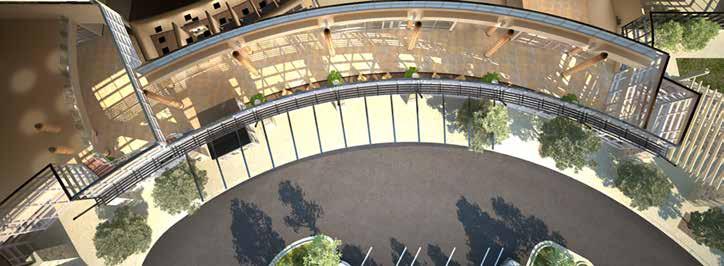
The fourth and final phase of the Hospital’s Master Facilities Plan calls for a connecting atrium to join the Renée and Lester Crown Outpatient Care Pavilion with the Evelyn H. Lauder Patient Care Pavilion on the east side of the Hospital. In addition, this newly constructed area will offer private admission and registration offices, improved access to all services, and will become a true “front door” to the Hospital.
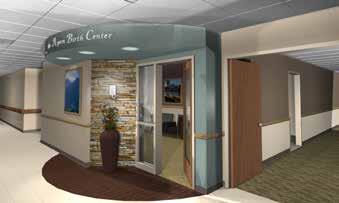
Completed in 2008, the first phase of the Master Facilities Plan allowed for the construction of the Aspen Birth Center.
Completed in 2012, phase II, the largest phase of the Master Facilities Plan, opened and it houses all of the Hospital’s inpatient rooms within the Evelyn H. Lauder Patient Care Pavilion, as well as the physical & sports medicine rehabilitation center, The Steadman Clinic, a new kitchen and café, several physician offices and cardiac/oncology rehab services.
Completed in 2018, phase III of the Master Facilities Plan encompasses the new Resnick Family Emergency Department, which serves over 8,000 patients annually. The Master Facilities Plan was strategically designed in phases to allow for all of the Hospital’s services to remain operational during construction. To date, the following areas have been completed:
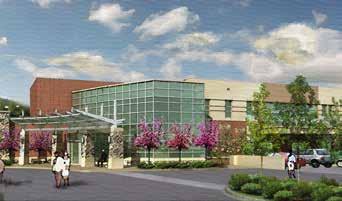
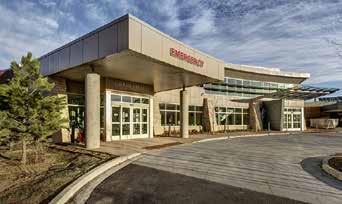
Phase I — Construction of the five-bed Aspen Birth Center.
Phase II — Expansion of all inpatient areas, including 16 private medical/surgical beds, four ICU rooms, a new Center for Physical and Rehabilitative Medicine, physician offices, new cardiopulmonary testing and treatment areas, upgrades to support services and a 216-space parking garage.
Phase III — Construction of the new Resnick Family Emergency Department, diagnostic imaging center, surgery center, the Marian and Ralph Melville Oncology and Infusion Center, and the laboratory, all housed in the Renée and Lester Crown Outpatient Care Pavilion.
THE FINAL PHASE With three of the four phases complete, we have our sights firmly set on completing the last component within this transformational modernization and renovation project. This final phase is the one that brings together the new east and west wings, creates a true front door to the Hospital, adds private registration and admission offices, and improves patient and visitor circulation. All in, we estimate that this phase will cost $12 million. At the end of the day, once we bring this entire project to full fruition, every clinical and nonclinical area will be housed in new or newly renovated space. The Hospital has invested over $165 million in expanding and modernizing facilities over the past decade. The funding for the final phase must come from philanthropy.
QUANTIFYING THE IMPACT OF PHILANTHROPY Since the inception of Aspen Valley Hospital Foundation over eight years ago, we have raised an amazing $62 million — with $54 million specifically dedicated to the Master Facilities Plan. Remember the cash reserves of $68 million? Those reserves would have been only $6 million at the end of 2020 — not even a full 30 days of operational reserves — had philanthropists not stepped in and made extraordinary investments in our future.
If you don’t think philanthropy matters, just ask the patient who just had a blood test in the newly constructed lab and found a rare blood disorder that was still treatable. Ask the woman who came in for her 3D mammogram and was able to immediately schedule a dense breast ultrasound — something
Connecting People to Purpose
she would have previously had to schedule in Denver. Ask the patient who was able to have a cardiac study performed at AVH that detected a cardiac abnormality that could be repaired. Or ask the cancer patient who can recover in their beloved Aspen home because chemotherapy treatments could be coordinated with our oncologist and theirs.
THE SPIRIT THAT MAKES THE DIFFERENCE The range of medical services at AVH is extremely atypical for a 25-bed critical access hospital. And make no mistake: The credit is due to the support of the community. Traditional sources of revenue, such as fees for medical services and the mill levy, maintain the status quo. We have a full-time hospital stepped up to manage our year-round community members’ needs, as well as surges in the local population during peak summer and winter months. It’s the philanthropic spirit of our community that has allowed the Hospital to manage challenges, keep services intact and bring quality care at heightened levels to all of our patients.
AVH’s financial performance has been nothing short of a miracle over the past 18 months. Thanks to our community’s support, we have raised over $5.1 million in the first half of 2021. The support we have received demonstrates our community’s commitment to ensuring Aspen has a state-of-the-art hospital at the ready, 24/7, 365 days a year. The needs are never ending and so, too, is the need for your support.
Unless otherwise noted, figures noted in this article are based on June 30, 2021 data.
HOW YOU CAN HELP
Aspen Valley Hospital Foundation is grateful for every donation it receives and is committed to using every dollar to make our community the healthiest in the nation.
Unrestricted gifts give AVH Foundation the most flexibility to direct funds where the need is most urgent, such as staffing, supplies, facilities, technology or equipment. Here are specific ways you can contribute:
n Click on the button or donate online by visiting supportaspenvalleyhospital.org. n Send your donation by mail by using the remittance envelope found inside this magazine. (Be sure to place a stamp on the envelope.) n To give by phone, call us at 970.544.1302.
We also gratefully welcome: n Annual, honorary, memorial and named gifts. n Stock gifts. n Donations to the Campaign for Aspen Valley Hospital. n Gifts of insurance and real estate, and gifts from IRAs. n Gifts made in honor of a caregiver. n Gifts made through an estate plan. For more information, please call 970.544.1302 or visit supportaspenvalleyhospital.org.
Aspen Valley Hospital Foundation l 0401 Castle Creek Road, Aspen, Colorado 81611 Phone: 970.544.1302 l Fax: 970.544.1164 l Email: avhf@aspenhospital.org








